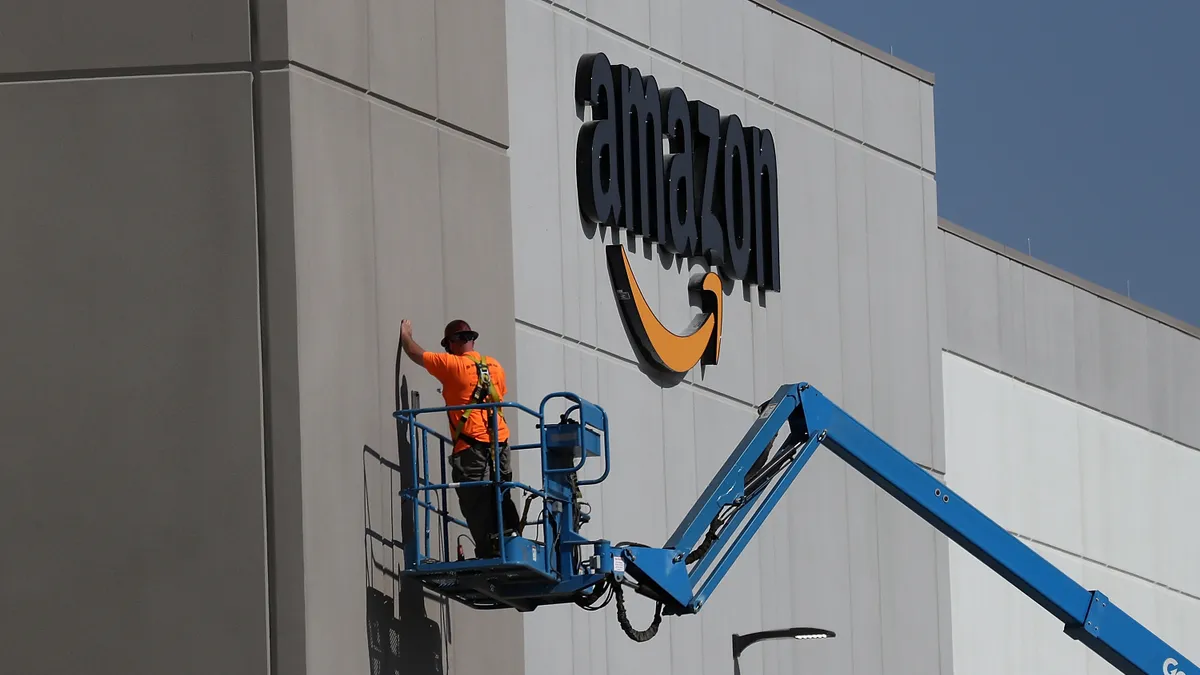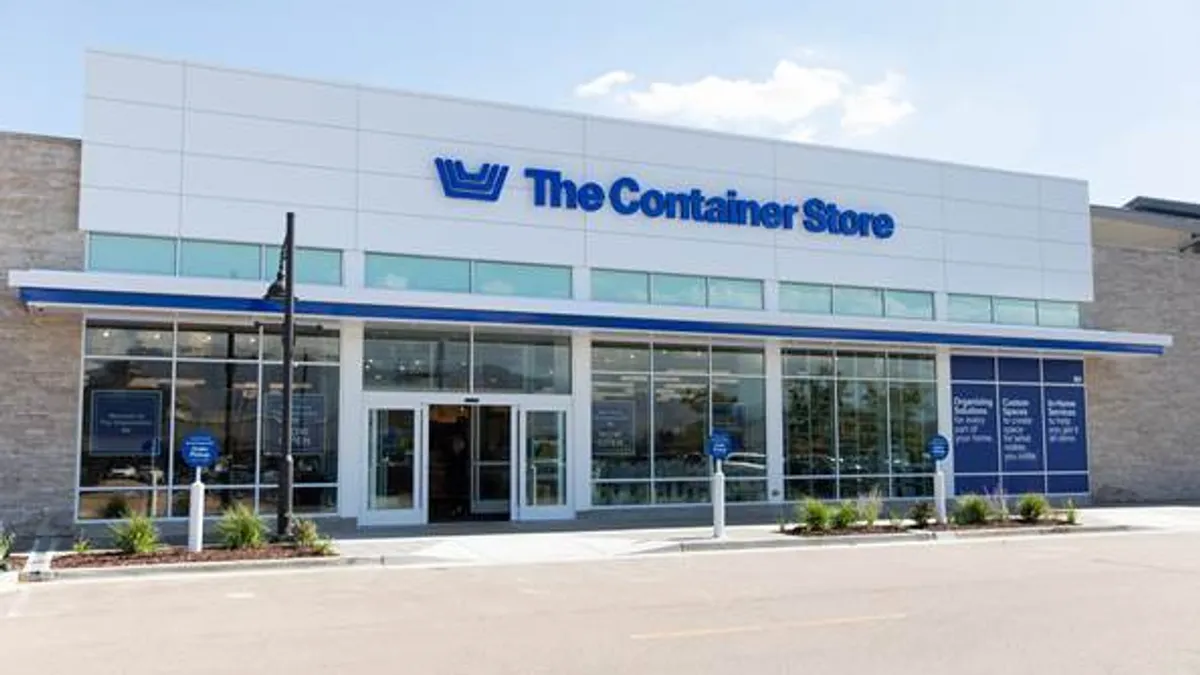Amazon has gone from online bookstore to e-commerce colossus and one of the world's biggest, most valuable corporations in large part because it has historically invested profits back into its operations.
As founder Jeff Bezos said in a 1997 letter to shareholders, "We will continue to make investment decisions in light of long-term market leadership considerations rather than short-term profitability considerations or short-term Wall Street reactions."
Since then, Amazon has built warehouses and distribution networks, rolled out new technology and services, and hired engineers, data scientists and warehouse workers at a furious pace.
All the while, financial investors treated Amazon differently from legacy retailers. During the 2010s, an investment in capacity or a major acquisition (see Whole Foods) often caused Amazon's stock prices to spike. Traditional retail companies making similar investments in their business would suffer drops when announcing a round of capital spending.
In short, shareholders loved it when Amazon invested in itself. That happy era for the company may be coming to end.
As evidence, consider the company's recently announced $10 billion share repurchase program and recent spending on repurchases. Both signal that the company is ready to spend more of its profits on shareholders, after years of plowing all its cash back into operations and avoiding the Wall Street pressures that other retailers have had to wrestle with.
In a filing, the company said the program would allow it to buy shares up to that amount "opportunistically from time to time when it believes that doing so would enhance long-term shareholder value."
A repurchase program is one thing. Amazon saying it can buy up to $10 billion in shares means it might spend $10 billion purchasing its stock in the open market, or any other amount less than that.
The company's board approved a $5 billion repurchase program in 2016. Over 2016, 2017, 2018, 2019, 2020 and 2021, Amazon spent … nothing. It made no repurchases. All the while its stock rose to dizzying new heights, joining the rarified world of companies with a trillion-plus dollar market cap.
Over the same period, the rest of the retail world has collectively spent many tens of billions of dollars on buybacks, financed with company profits and, for some, with debt.
A 5-year history of buybacks for some of the top retailers
| Year | Walmart | Target | Home Depot | Dollar General | Amazon |
|---|---|---|---|---|---|
| 2021 | $9.8 billion | $7.2 billion | $14.8 billion | $2.5 billion | $0 |
| 2020 | $2.6 billion | $609 million | $791 million | $2.5 billion | $0 |
| 2019 | $5.7 billion | $1.5 billion | $7 billion | $1.2 billion | $0 |
| 2018 | $7.4 billion | $2.1 billion | $10 billion | $1 billion | $0 |
| 2017 | $8.3 billion | $1 billion | $8 billion | $580 million | $0 |
| 2016 | $8.3 billion | $3.7 billion | $7 billion | $990.5 million | $0 |
Source: SEC filings, press releases
A repurchase program commits Amazon to nothing except a ceiling. Unlike a dividend, company leadership is under no obligation to buy shares in any given period under a repurchase program. (Also unlike a shareholder dividend — something else Amazon never spends its profits on — buybacks benefit investors who sell, rather than hold, their stock.)
All that said, it is noteworthy that Amazon doubled its repurchase cap. It's even more noteworthy that Amazon has already made about $2.1 billion of stock repurchases (under the 2016 program) — all of it apparently this year — given its history of abstaining.
That is $2.1 billion Amazon won't be spending on new distribution centers, warehouse wages, engineers, new product development, data centers, analytics and so on. And that puts Amazon in very good company in the retail world, where many publicly traded companies have tried to balance operational investment with shareholder returns.
Supporting the stock price
So, what changed?
For one thing, Amazon's stock price. While it is still up, tremendously, from its pre-pandemic prices, the stock is down from its pandemic highs of more than $3,700.
William Lazonick, president of the Academic-Industry Research Network and a professor emeritus of economics at the University of Massachusetts, also points to the longer-term divestment of Jeff Bezos in the company, whose ownership share has decreased over time. That has opened the door to others to buy more stock, and with it, influence over Amazon.
Among them is activist investor Daniel Loeb of Third Point, which by the end of last year owned a more than $780 million stake in Amazon.
Loeb, according to the Wall Street Journal, shows no signs yet of pursuing an activist campaign against Amazon but said on a call with investors in Third Point that the e-commerce giant has $1 trillion in untapped value. Loeb also suggested the market has failed so far to see the value in Amazon as two separate companies: its e-commerce operations and Amazon Web Services cloud unit.
Loeb also, according to the Journal, said he was encouraged by Amazon's recent share repurchases, which broke with many years of practice.
That may have been part of the point of the new program. "They're just saying, 'We're willing to do this, so you don't have to get nasty with us. We'll support the stock price,'" Lazonick said. "$10 billion probably won't appease them [i.e., activists], but that's just a signal."
Buybacks weren't always legal. They used to be effectively banned as market manipulation until the Securities and Exchange Commission under the Reagan Administration dramatically loosened the rules to allow for regular, and large, repurchases.
Today, companies describe repurchases in their financial statements as a means of returning capital to shareholders. Supporters often compare them to dividends in that respect, while critics say that repurchases inflate stock prices and divert cash away from economic investment and to short-term investors.
If the stock buybacks serve to appease potential activists, the stock split may dilute their power over the company. The lower price per share after the split could allow in more and smaller investors. (At the time of writing, Amazon's shares frequently cost more than $3,000 apiece on the market.)
In a note following Amazon's filing, MKM Partners Managing Director Rohit Kulkarni pointed to growth in share prices at Apple and Tesla following a split. Amazon and Google, which also announced a stock split recently, "are widely popular companies among consumers … so this may bring in more retail investors," Kulkarni said in the note.
For its part, Amazon said of the split that, if approved by shareholders, would "give our employees more flexibility in how they manage their equity in Amazon and make the share price more accessible for people looking to invest in the company."
Noting that the stock split gives Amazon employees the ability to "tap into their total compensation in a bite-sized manner," Kulkarni said in the note, "While we do not expect [Amazon] to buy back shares enough to offset incremental dilution every year, we see these three moves, higher cash compensation, stock split, and stock repo, as a way to possibly reduce the incremental dilution going forward."
In the note, Kulkarni also suggested that the Amazon had passed through a "peak investment cycle" after $80 billion in capital spending since the beginning of the pandemic, more than the past nine years.
It's notable that the change follows Andy Jassy's appointment to the CEO spot last year. After taking over, Jassy added "strive to be the Earth's best employer" as a leadership principle. About which, Kulkarni posed a question: "Now, is he planning on making Amazon the earth's most shareholder-friendly company?"





















